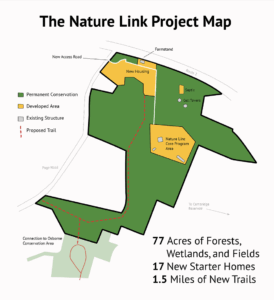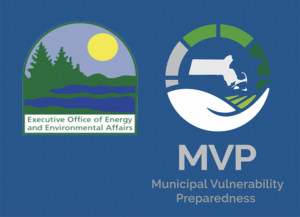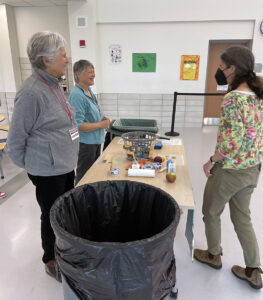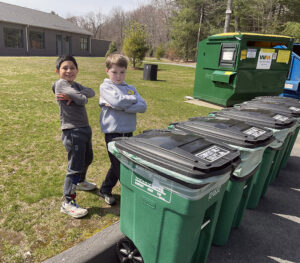 The May 22 article headlined “June 25 Special Town Meeting agenda grows” misstated the proposed future ownership of the Farrington/Panetta land as well as the number of signatures required to bring a citizens’ petition (100 for a Special Town Meeting, vs. the 10 signatures need for a regular Annual Town Meeting). The article has been updated with information below from Rural Land Foundation Executive Director Geoff McGean.
The May 22 article headlined “June 25 Special Town Meeting agenda grows” misstated the proposed future ownership of the Farrington/Panetta land as well as the number of signatures required to bring a citizens’ petition (100 for a Special Town Meeting, vs. the 10 signatures need for a regular Annual Town Meeting). The article has been updated with information below from Rural Land Foundation Executive Director Geoff McGean.
The RLF is trying to arrange for Farrington Memorial, which owns 75 acres of land on the south side of Route 2, to get $3.1 million from a combination of the town’s Community Preservation Act fund, the City of Cambridge, and private donations. Farrington will retain ownership, but 65 of those acres will then have a permanent conservation restriction and trail easement held by the town. The remaining 10 acres where the Farrington Nature Linc buildings are now located will have a deed restriction that will significantly limit their future expansion.
In addition, some of the Farrington land (mostly wetlands) will be deeded by Farrington to the City of Cambridge for watershed protection purposes. That land will also have a permanent conservation restriction held by the town.
In a separate deal, developer Civico will pay $3.1 million in a single transaction for three lots that currently have houses. Two parcels (2.8 acres and 3.2 acres) are now owned by the Frank J. Panetta Trust and a third 14.1-acre lot is owned by the Paul Panetta Trust. The company will then build 20 starter homes, which will be sold to future buyers individually. The town is not involved in the financial negotiations for this transaction, and no town money will be used for land acquisition or housing construction.
After the housing is built, no major changes or additions to the Civico land can be made without the agreement of all the homeowners as well as Town Meeting, because the town is approving this specific development under the North Lincoln Overlay District. See this RLF public outreach slide deck for more details as well as maps and drawings.


 Upfront carbon emissions account for a staggering 13% of global CO2 emissions and require urgent action to address them. But most people know very little about them. What are they?
Upfront carbon emissions account for a staggering 13% of global CO2 emissions and require urgent action to address them. But most people know very little about them. What are they?



